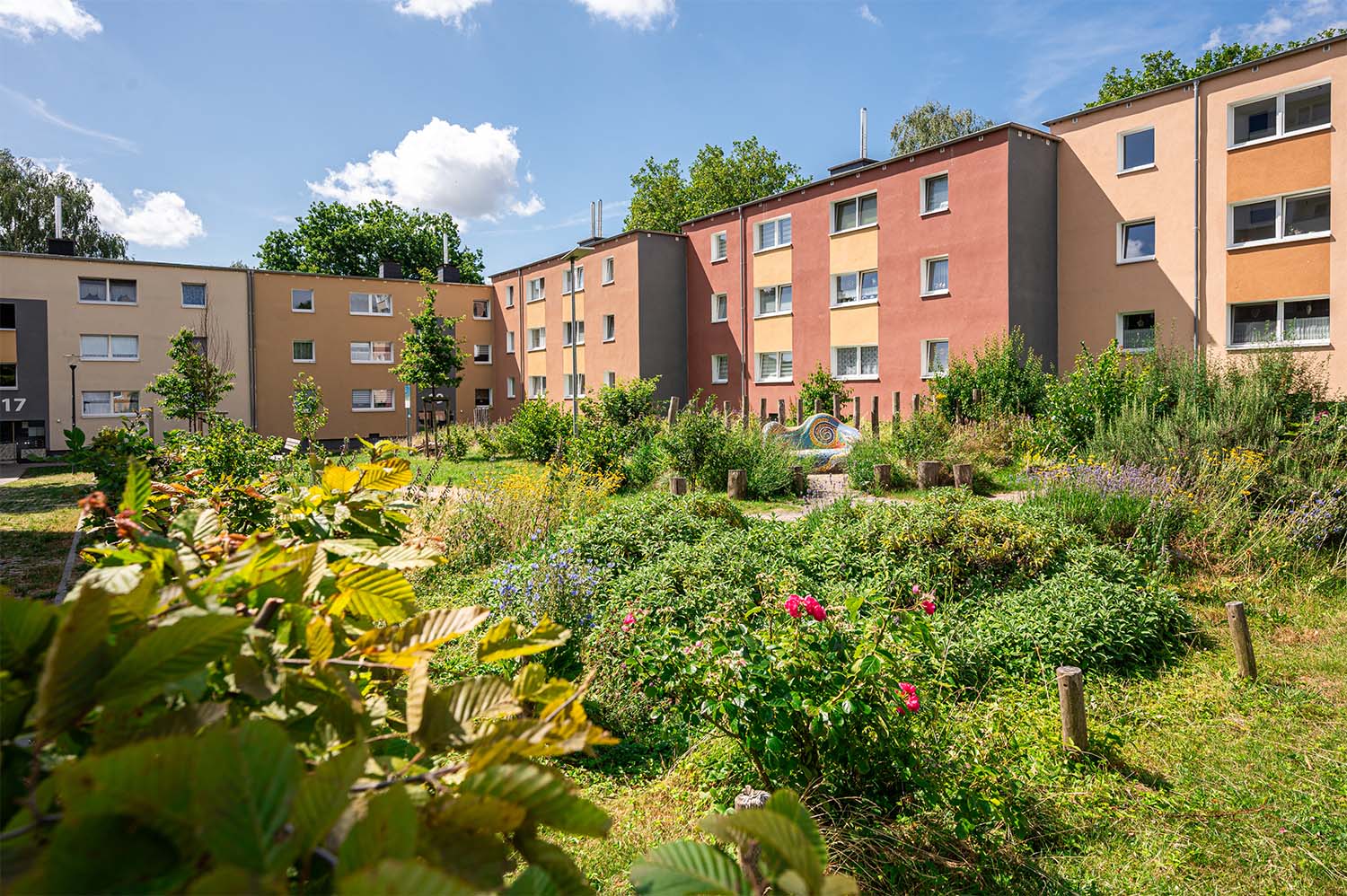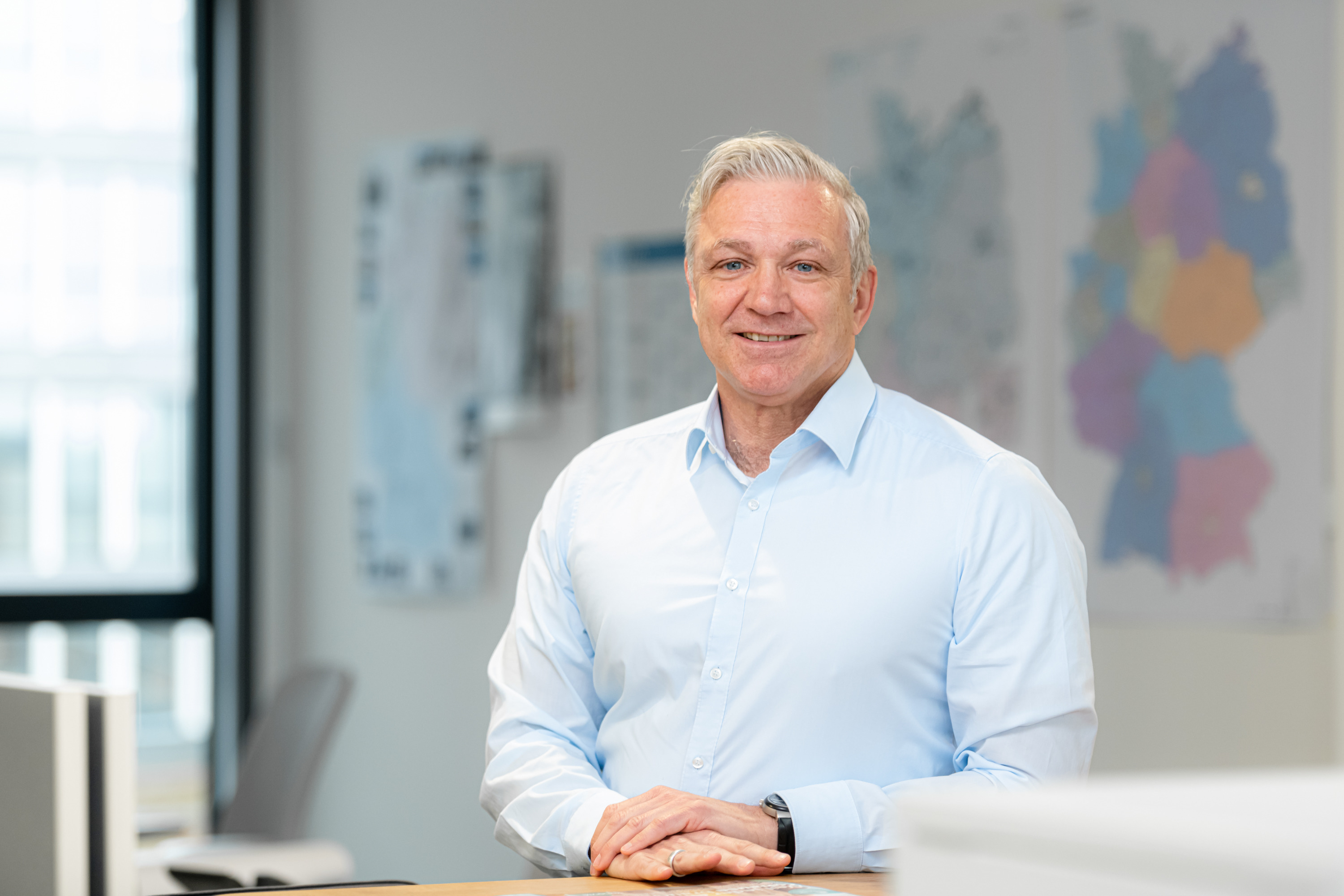Act reliably
Our Annual Report

Constructing and managing a large real estate portfolio means we have an impact on the local climate and ecological environment of our neighborhoods. These are located primarily in major metropolitan areas, where the value of green spaces and trees is particularly high. This offers huge potential for sustainable action. We want to exploit this potential – not least to improve the quality of living for our tenants. Therefore, we maintain and design over 24 million square meters of green spaces, of which over 5.6 million m² wooded area and around 257,000 trees to create a sustainable and livable environment.
Vonovia positions itself as a green residential real estate company, aiming to become the market and innovation leader in sustainable residential environment construction. What this means for us:
Medium to long-term Target (2030-2045): Successively redesigning and upgrading our neighborhoods to transform them into resilient communities of plant species and habitats.
By enhancing the ecological value of our properties and designing them to be resilient, we ensure a high quality of living and increase tenant satisfaction. Our large number of qualified professionals and the standardization of design modules and processes enable us to generate efficiency and cost advantages in planning and implementation. Through positive residential environment design, we also influence the development of neighborhoods and raise awareness among residents about the importance of climate protection.
Natural environmental conditions are noticeably changing: heat waves, rising temperatures, storms, and heavy rainfall are increasingly causing vegetation damage and infrastructure failures. Monoculture farming and soil sealing exacerbate this development. The result: biodiversity declines, as does the quality of life in the neighborhood. Additionally, pests like the oak processionary moth are becoming more prevalent.
By enhancing the ecological value of our properties and designing them to be resilient, we ensure a high quality of living and increase tenant satisfaction. Our large number of qualified professionals and the standardization of design modules and processes enable us to generate efficiency and cost advantages in planning and implementation. Through positive residential environment design, we also influence the development of neighborhoods and raise awareness among residents about the importance of climate protection.
Natural environmental conditions are noticeably changing: heat waves, rising temperatures, storms, and heavy rainfall are increasingly causing vegetation damage and infrastructure failures. Monoculture farming and soil sealing exacerbate this development. The result: biodiversity declines, as does the quality of life in the neighborhood. Additionally, pests like the oak processionary moth are becoming more prevalent.
We pursue a balanced approach that considers the individual requirements on-site while also relying on standardized processes with consistently high quality.
Our standardized solutions are documented in a design manual that includes a modular system for ecological neighborhood design. It provides the framework within which structural and design measures are implemented in the neighborhoods.
Before a measure is included in our modular system for ecological neighborhood design, it undergoes a qualitative development process, for example, involving experts from the Nature and Biodiversity Conservation Union (NABU). Together, we have tested various habitat types and nesting boxes for insects, bats and endangered bird species (such as the swift) as well as the vitalization of habitats through green-blue infrastructure in water-storing infiltration basins in numerous projects. We also explore revitalizing habitats through blue-green infrastructure in water-retaining infiltration basins. In our pilot neighborhood in Bochum-Weitmar, after three years of collaborative development and testing, we have achieved the maximum number of habitats implementable for the housing industry. We will let this neighborhood develop for three to four years before conducting a new survey of flora and fauna.
Additionally, we consider the neighborhood criteria of the German Sustainable Building Council (DGNB) for biodiversity (ENV2.4) and water cycle systems (ENV2.2), whose standards we already meet in numerous neighborhoods.
In addition to many other measures, digital planning processes play a key role in enabling resource-efficient operations and generating economic savings. At Vonovia, the foundation for digital land management is a geographic information system (GIS), which contains the company’s site maps.For Vonovia and WUS, it was particularly important to establish interfaces not only with the tree and playground registers but also with the ERP system. Digitizing outdoor spaces creates transparency, which is essential for needs-based order management.In the context of demonstrating ESG criteria and addressing climatic changes, the integration of additional elements is becoming increasingly important. The registry is therefore continuously expanded to include sustainability-related features such as insect hotels, habitats, cisterns and infiltration systems.

